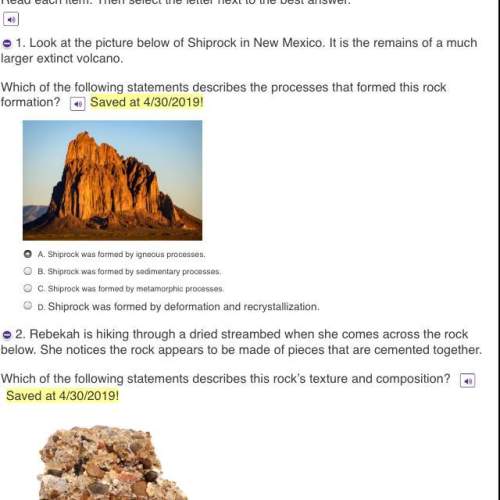
Biology, 29.06.2019 19:30 kitttimothy55
Intensive eradication efforts and declining numbers of prey, bison, elk, and white-tailed deer in the south; moose, deer, caribou, and beaver in the north, caused the wolf declines in the western great lakes area. bounties paid for dead wolves began during the 1800's. by 1838, wolves were eliminated from the southern portion of michigan, by the early 1900's they were eliminated from southern minnesota and wisconsin, and by 1960, wolves were also gone from northern wisconsin and michigan, except isle royale, and from most of minnesota. over the last 50+ years, efforts have been made to recover the wolf populations mentioned here. as seen in the data table, those efforts appear to be working.

Answers: 1


Another question on Biology

Biology, 21.06.2019 19:30
What is the "great pacific garbage patch"? a large area of marine debris concentrated by rotating ocean currents a large area around the pacific rim where debris collects from natural disasters such as tsunamis an area in the pacific ocean where trash is intentionally dumped due to lack of landfill availability a large trash dump located in hawaii
Answers: 1

Biology, 22.06.2019 02:00
Consider the motion of the balloon and its air contents in terms of momentum. in step 1 above, the total momentum of the balloon and its contents was zero. recall that momentum = mv. both the balloon and the air inside it had a velocity of zero and therefore the total momentum was zero. now think about what happened when the air escaped from the balloon. a certain mass of air accelerated in one direction. in order to keep the total momentum of the system zero, the balloon itself (which has mass) had to accelerate in the opposite direction. use this scenario to you explain why the soda can rotates when the water squirts out of the escape holes. what was your hypothesis concerning the water-filled can? according to your data, do you think your hypothesis was correct? (be sure to refer to your data when answering this question.) summarize any difficulties or problems you had in performing the experiment that might have affected the results. describe how you might change the procedure to avoid these problems. give at least one more example of newton's third law in everyday life.
Answers: 1

Biology, 22.06.2019 06:20
Select the correct answer from each drop-down menu proteins are
Answers: 2

Biology, 22.06.2019 08:00
Two students are working together on an experiment that measures the effect of different liquid fertilizers on the thickness of plants’ stems. which is most likely to result in the greatest amount of error in their scientific experiment? a.one student measures the plant stem widths by using calipers. the other student measures the widths of the same plant stems again by using a different pair of calipers. b.one student measures the plant stem widths by using calipers. the other student types the measurements as they are taken into a computer spreadsheet. c.one student weighs liquids for the experiment by using a calibrated scale. the other student weighs liquids for the experiment by using a different calibrated scale.
Answers: 1
You know the right answer?
Intensive eradication efforts and declining numbers of prey, bison, elk, and white-tailed deer in th...
Questions



Social Studies, 22.10.2020 19:01


Advanced Placement (AP), 22.10.2020 19:01



Mathematics, 22.10.2020 19:01

Physics, 22.10.2020 19:01

Biology, 22.10.2020 19:01

Biology, 22.10.2020 19:01

Mathematics, 22.10.2020 19:01


Physics, 22.10.2020 19:01

English, 22.10.2020 19:01



Mathematics, 22.10.2020 19:01

Chemistry, 22.10.2020 19:01




